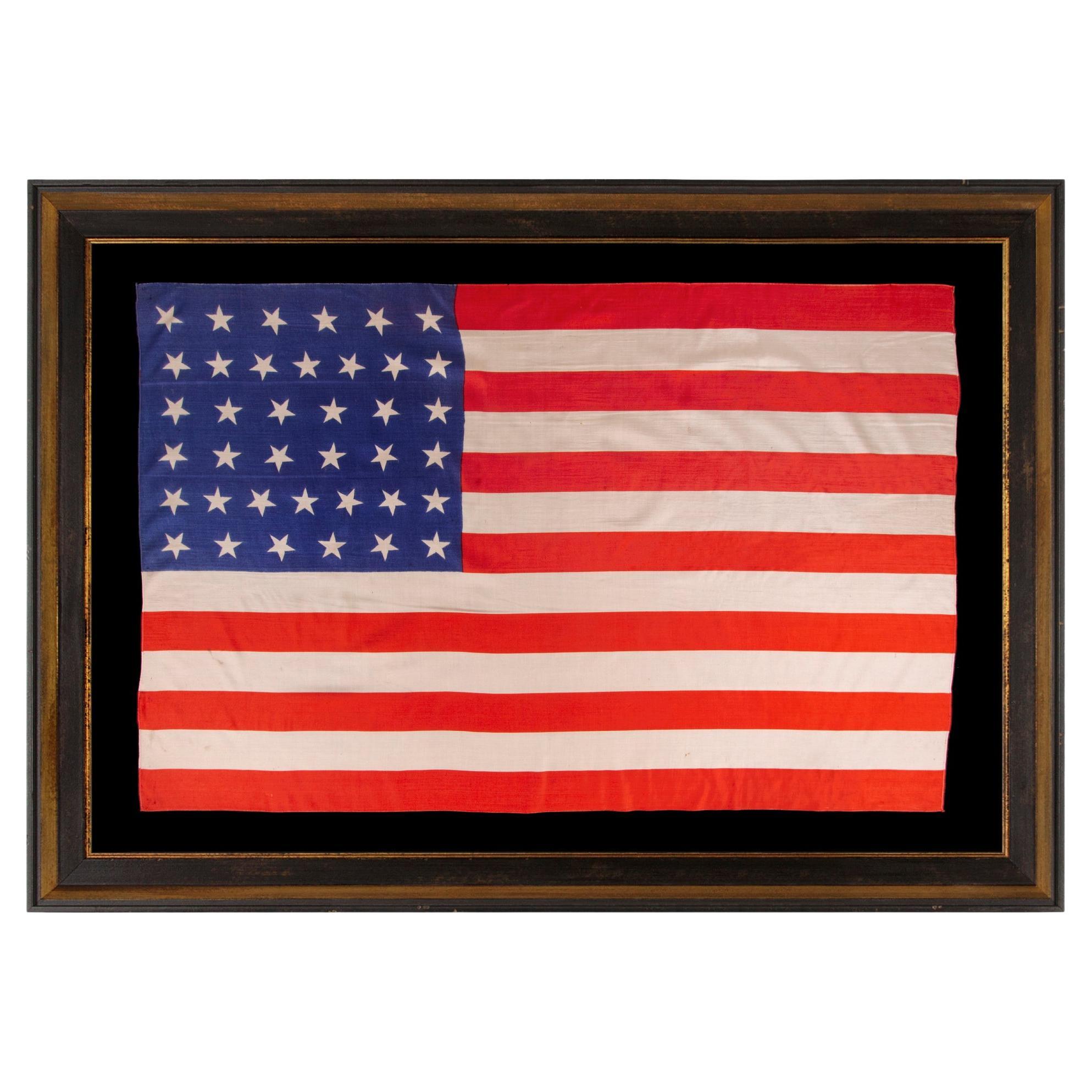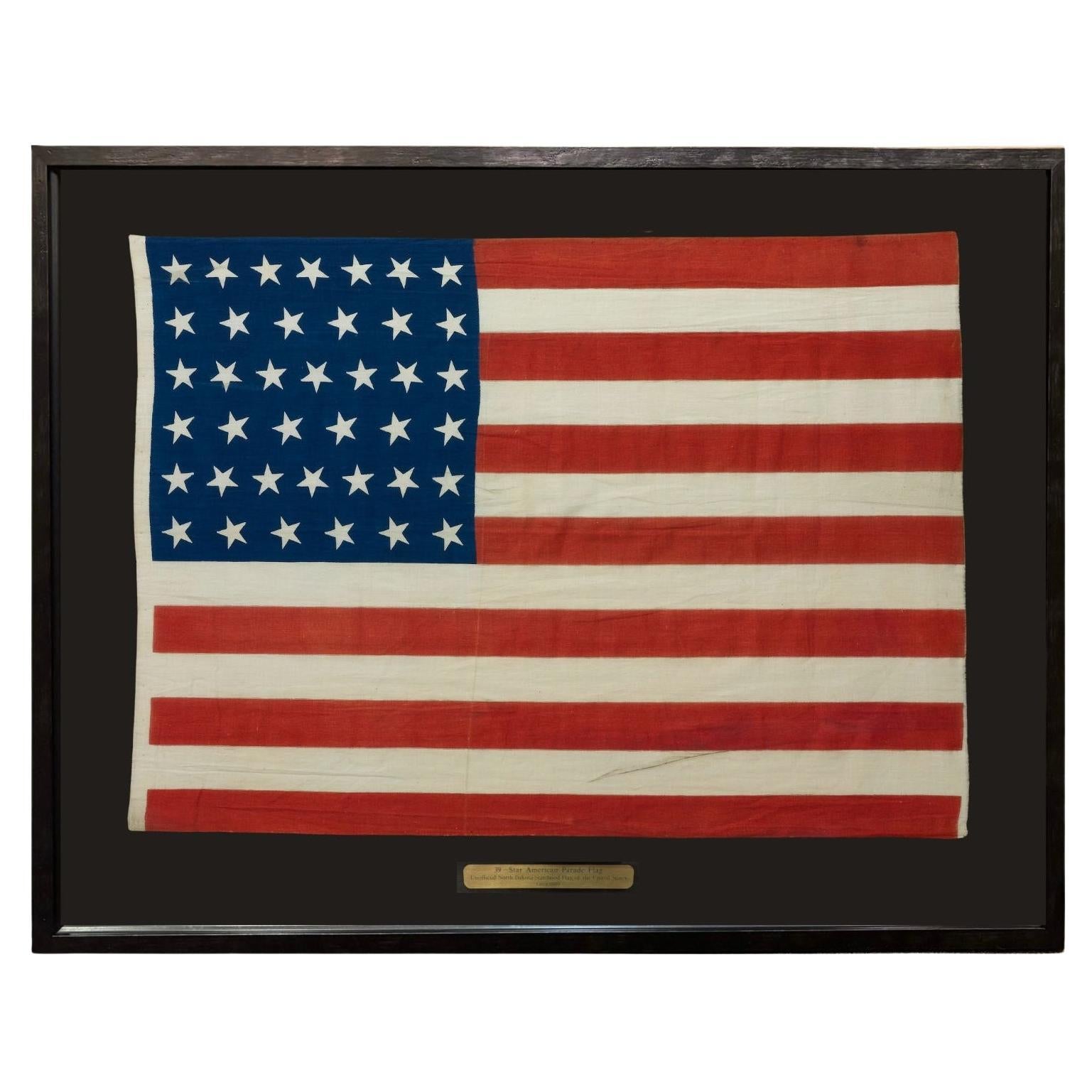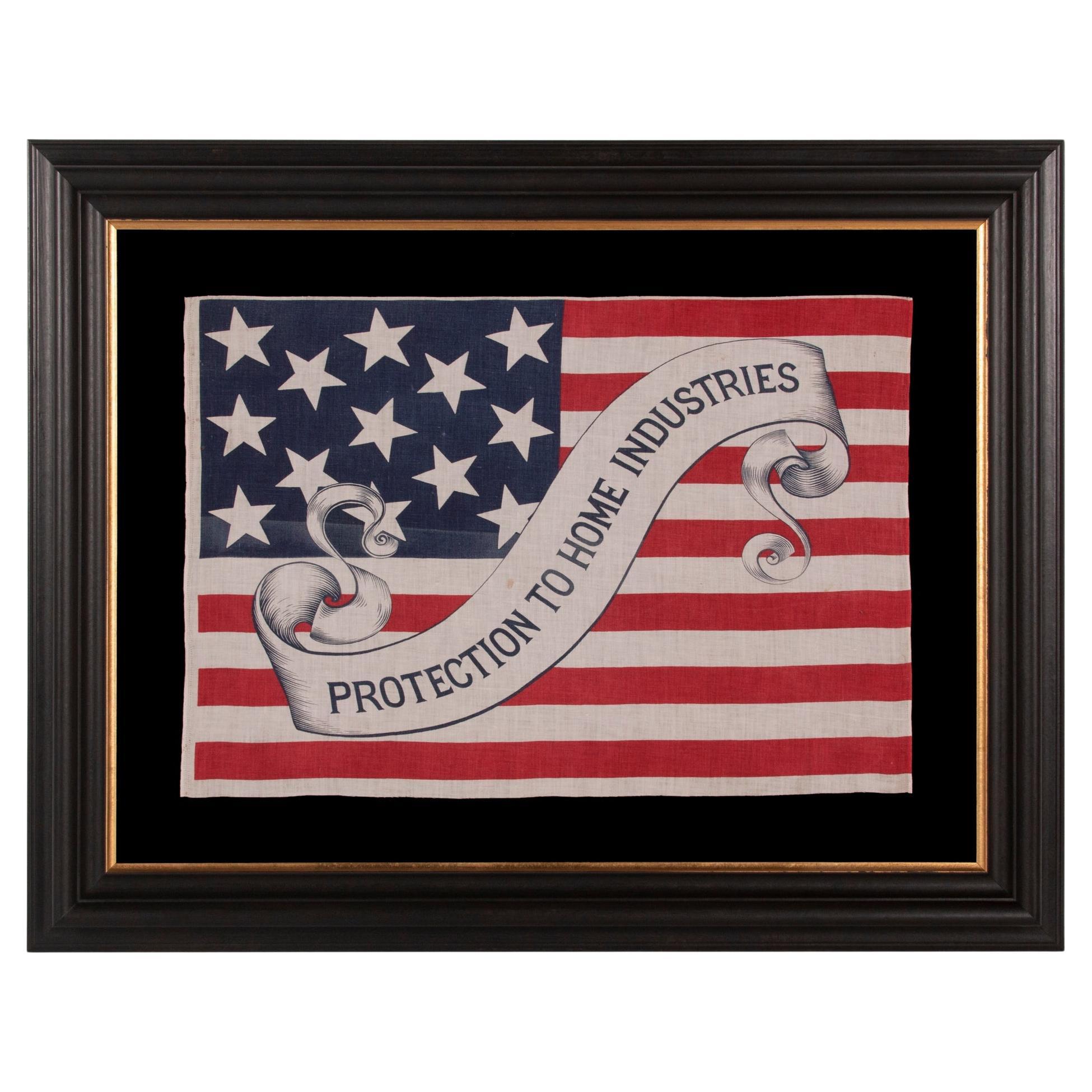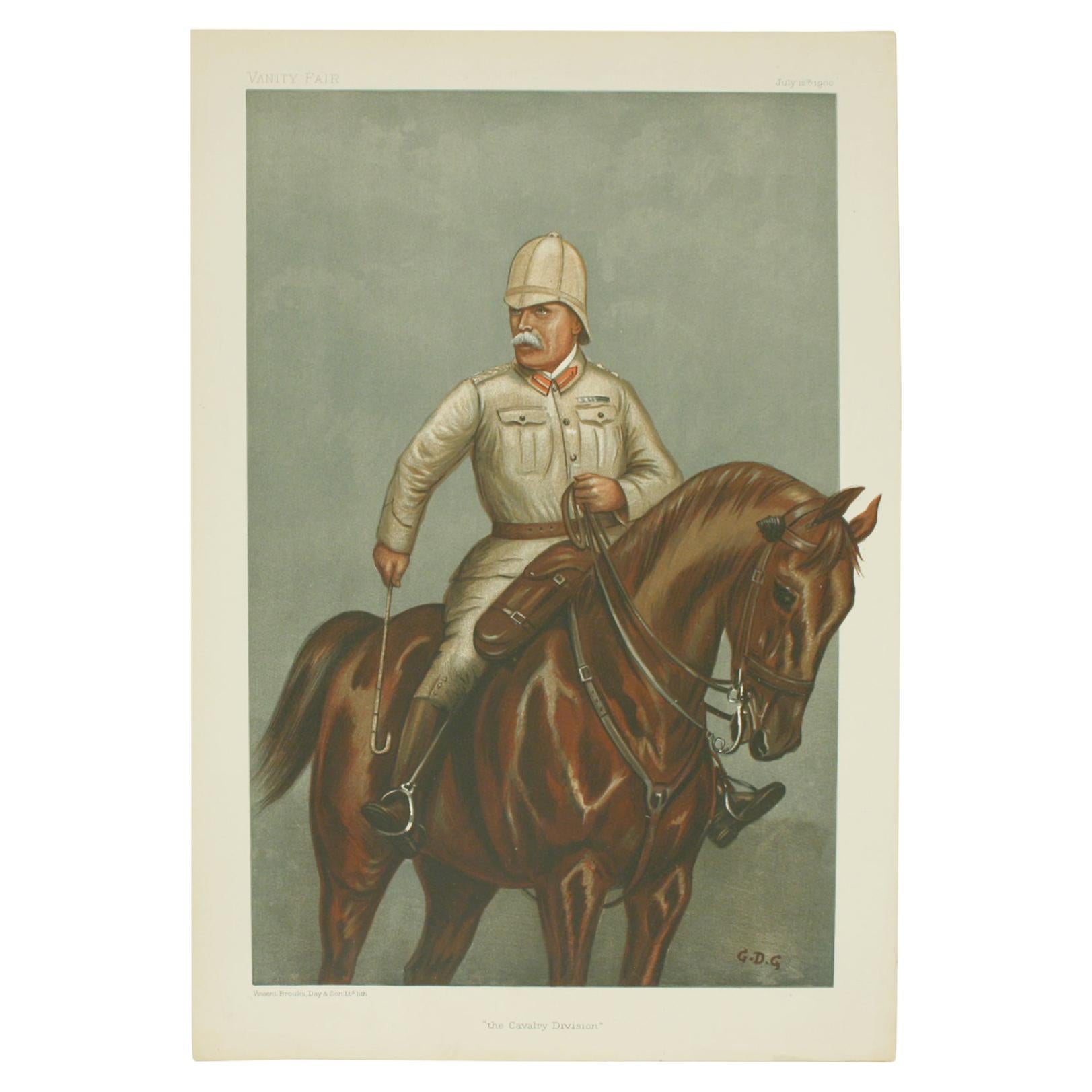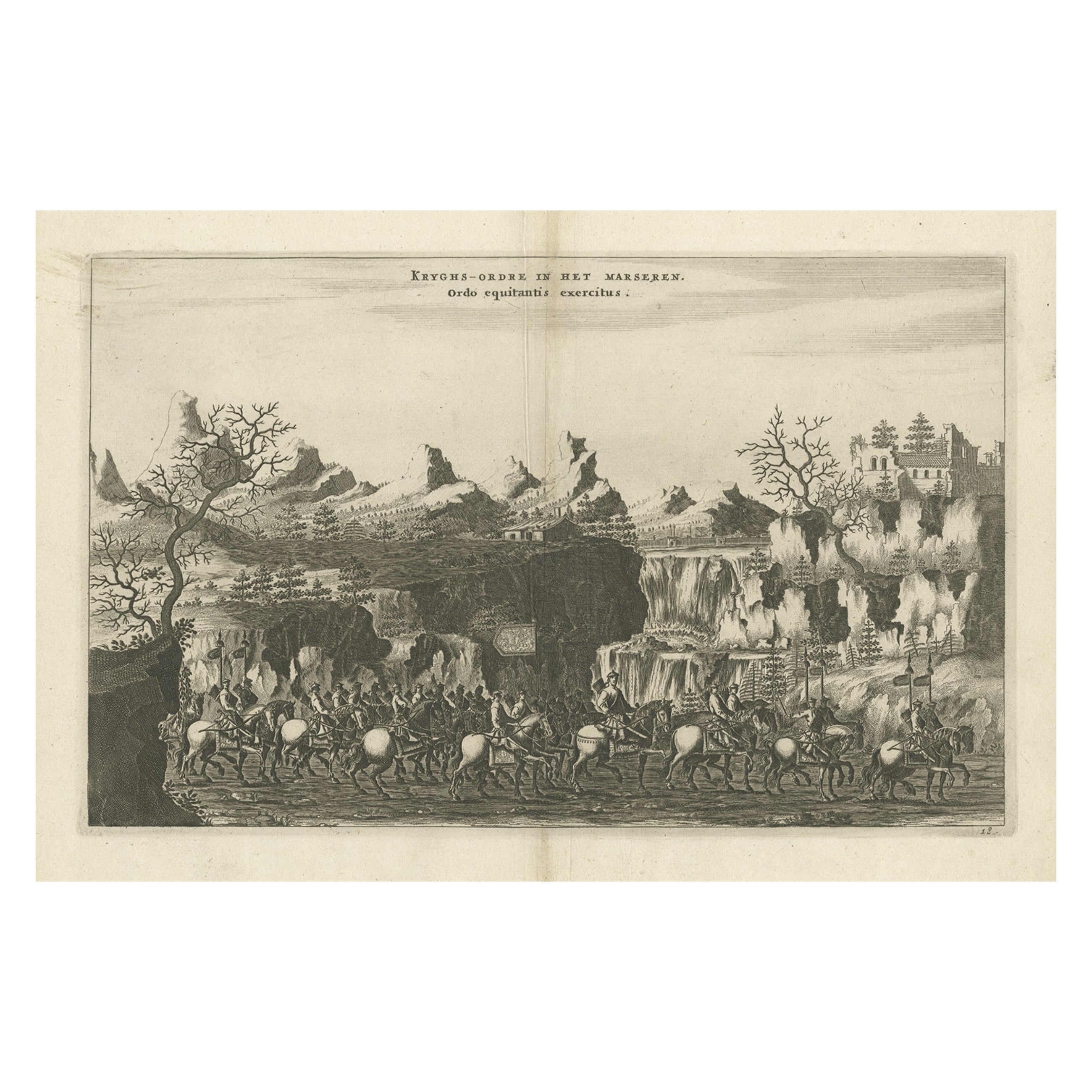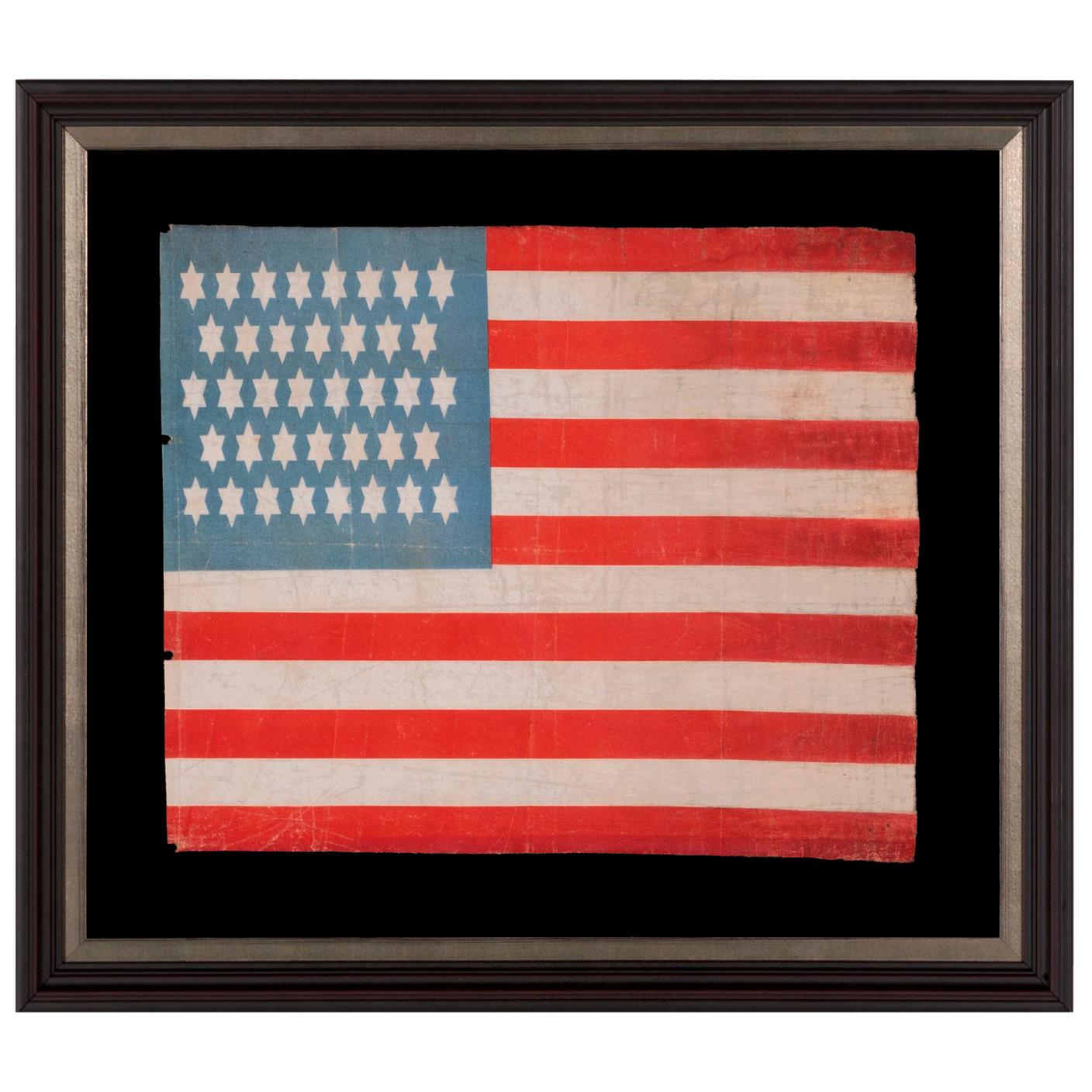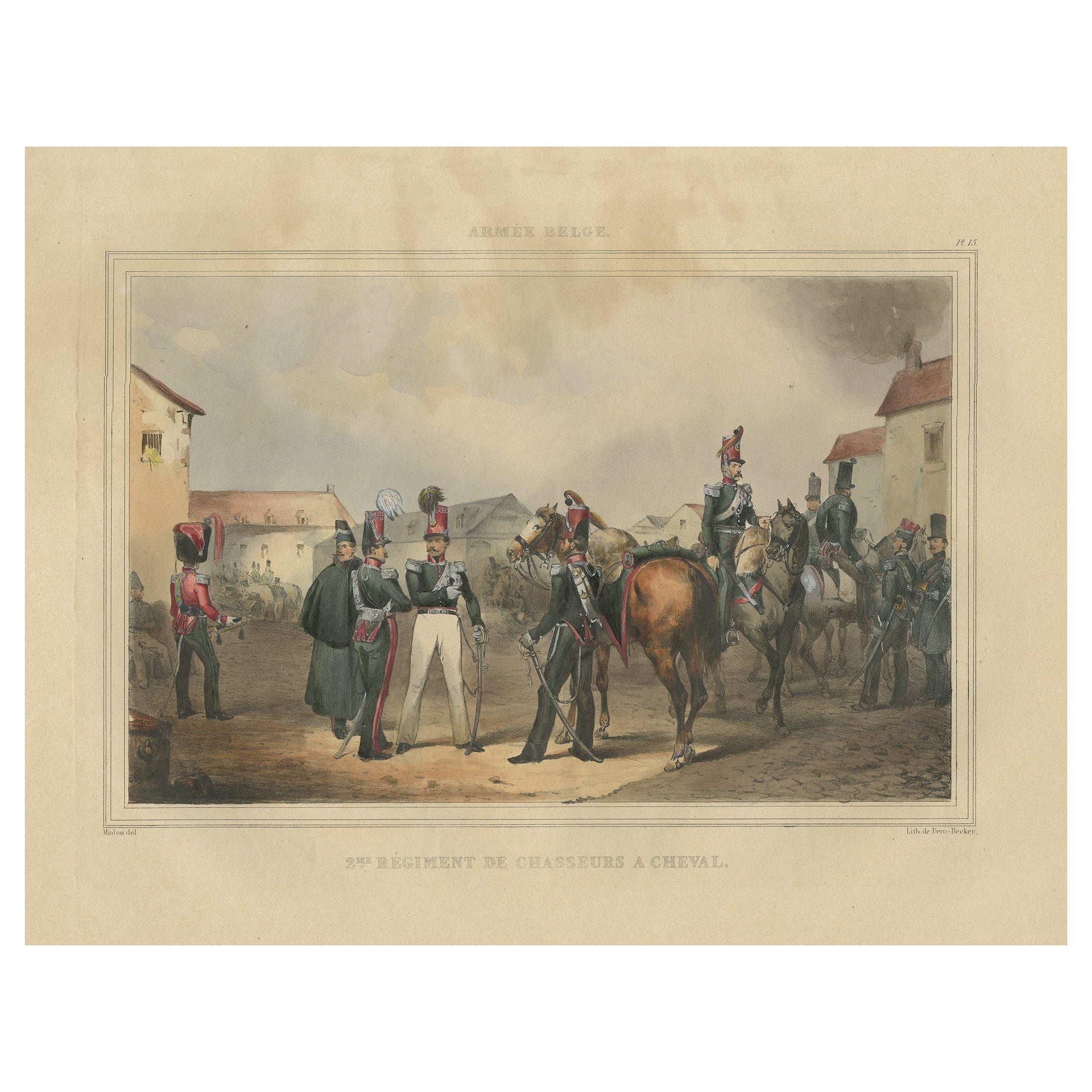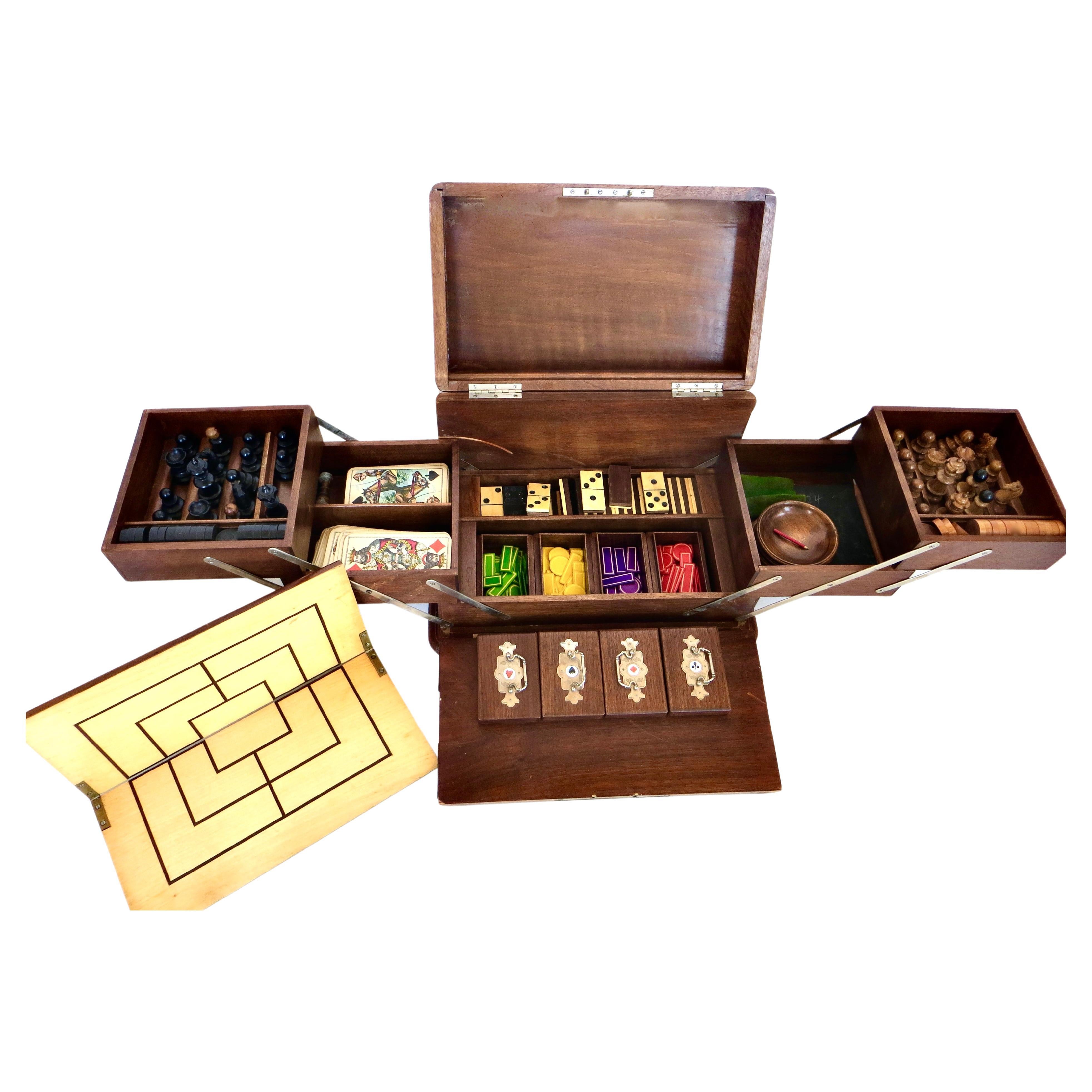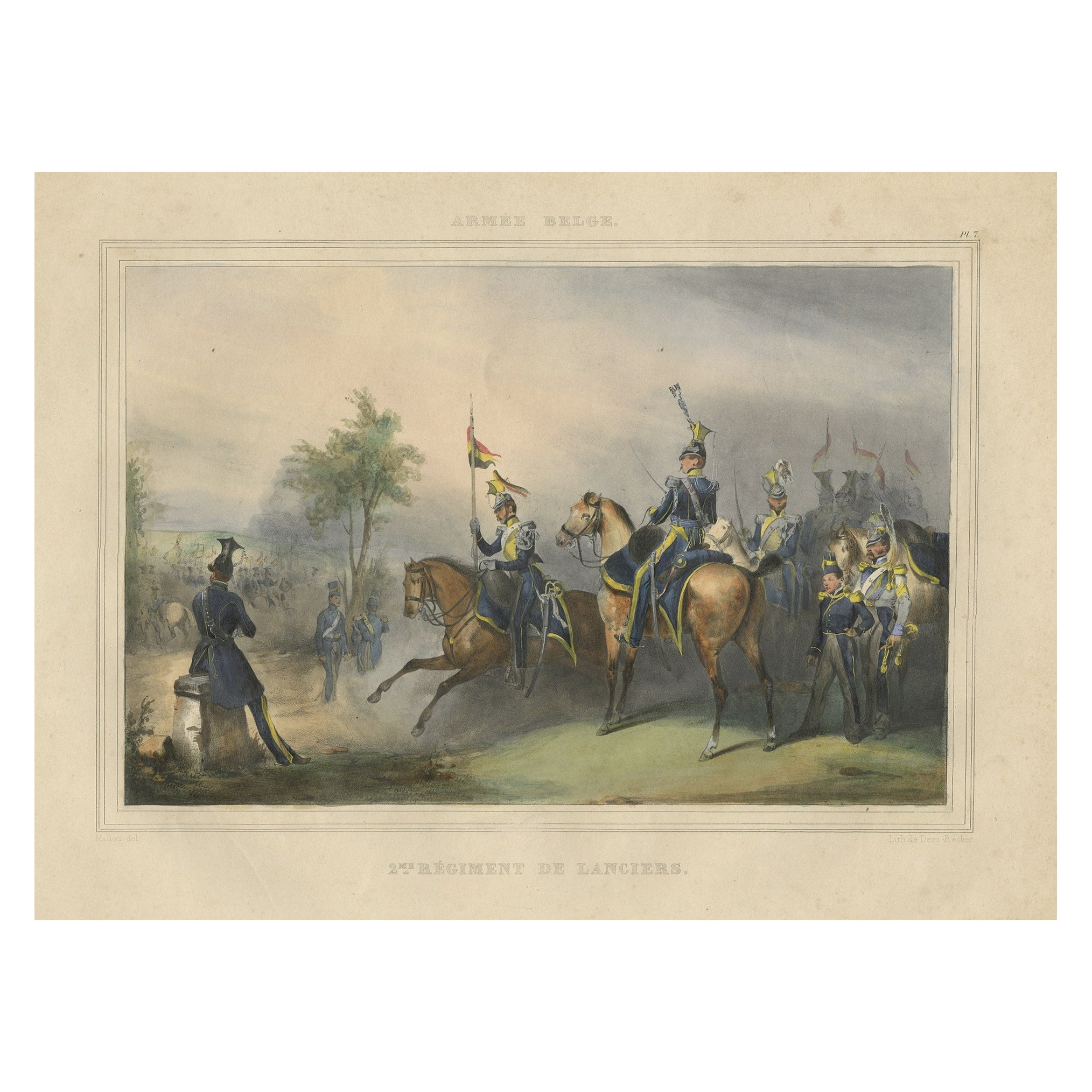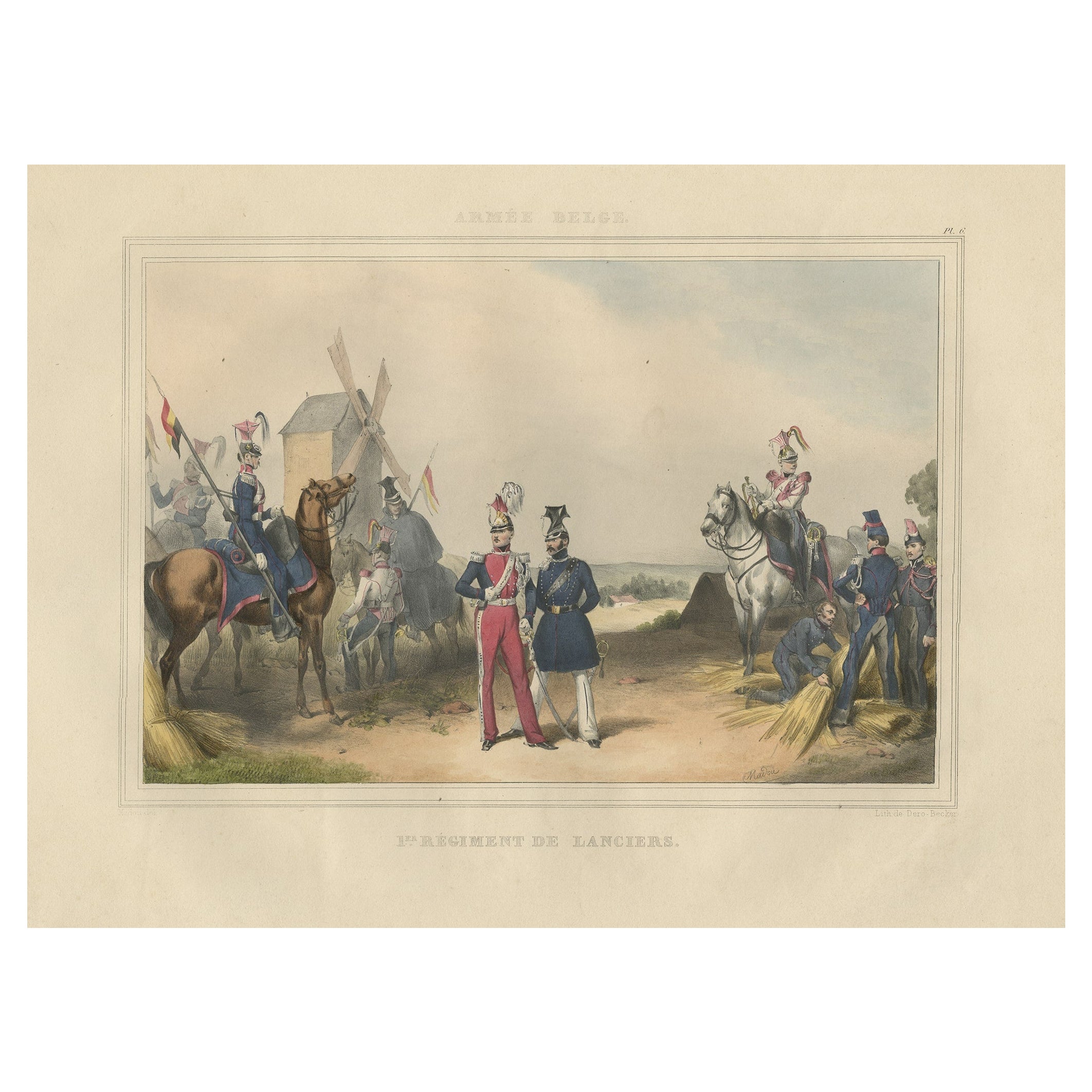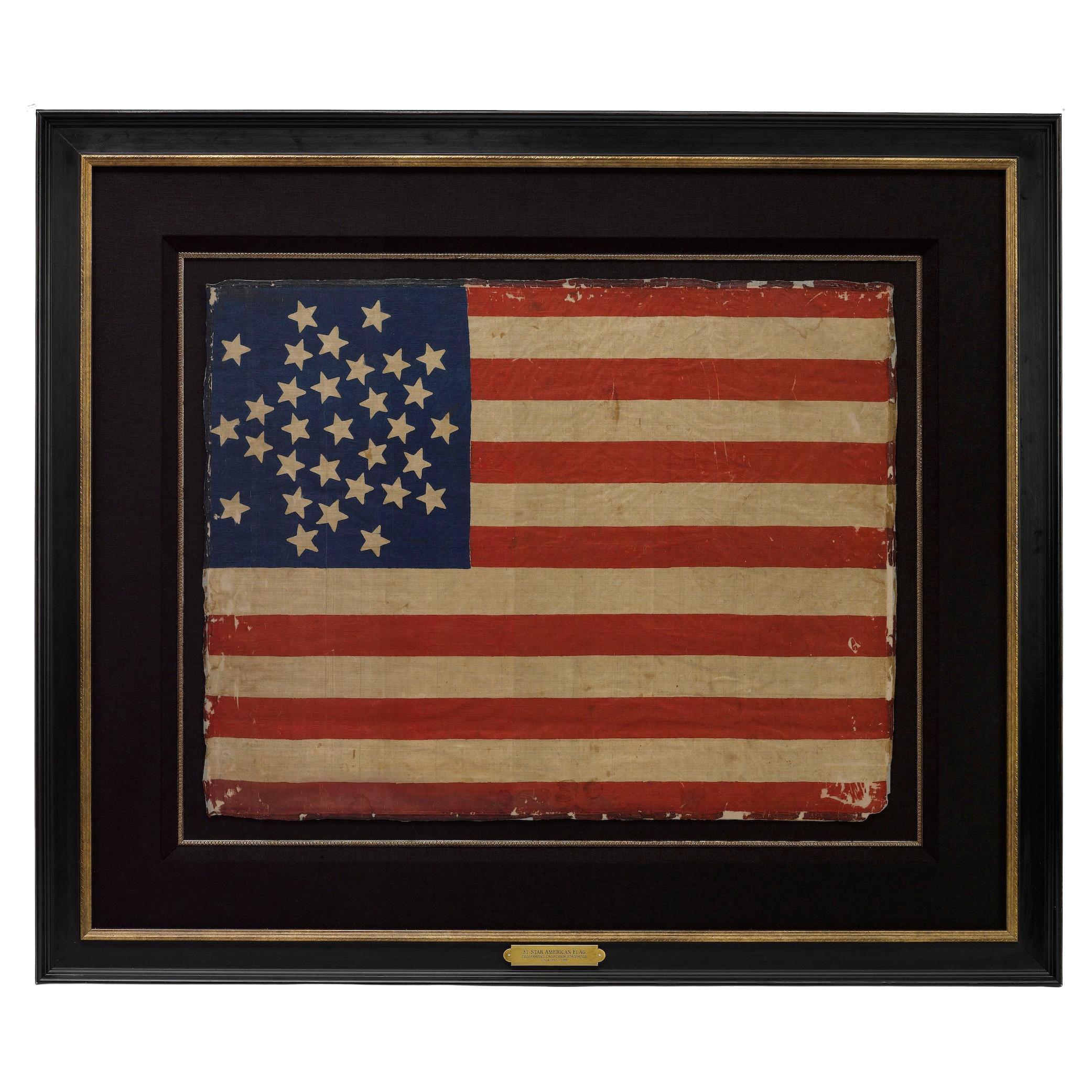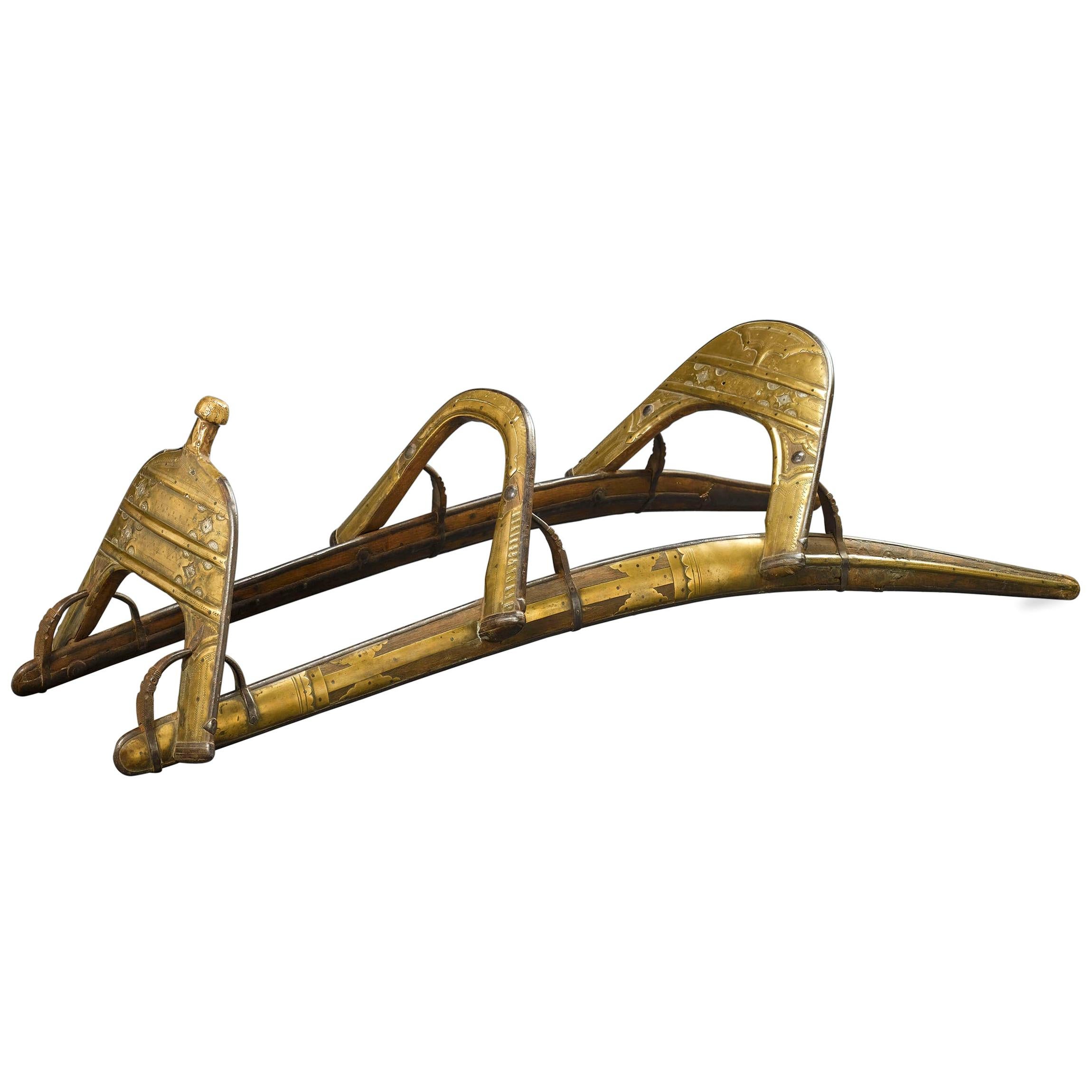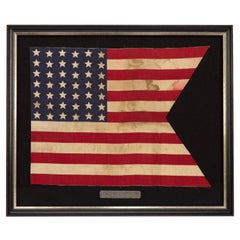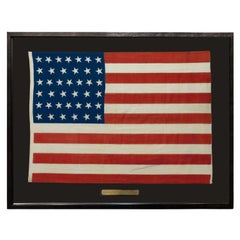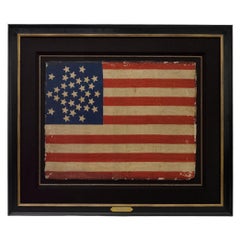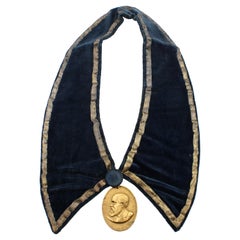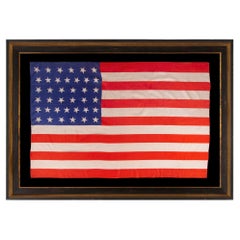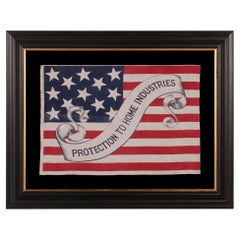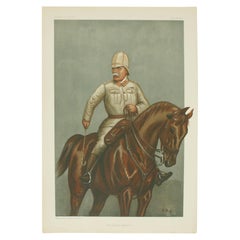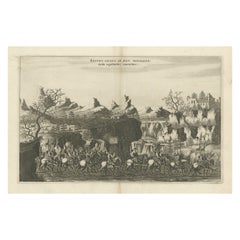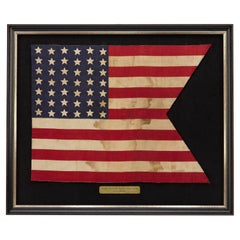
42-Star 7th Cavalry Regiment Parade Guidon, Printed "7C", Circa 1889-1895
View Similar Items
Want more images or videos?
Request additional images or videos from the seller
1 of 8
42-Star 7th Cavalry Regiment Parade Guidon, Printed "7C", Circa 1889-1895
$4,750List Price
About the Item
- Dimensions:Height: 25.75 in (65.41 cm)Width: 30.5 in (77.47 cm)Depth: 1.75 in (4.45 cm)
- Materials and Techniques:
- Place of Origin:
- Period:
- Date of Manufacture:1889-1895
- Condition:Additions or alterations made to the original: Archivally mounted and custom framed by Art Source International in Boulder, Colorado, in May of 2025. Wear consistent with age and use. Minor fading.
- Seller Location:Colorado Springs, CO
- Reference Number:Seller: F4661stDibs: LU909744985942
About the Seller
4.9
Platinum Seller
Premium sellers with a 4.7+ rating and 24-hour response times
Established in 2010
1stDibs seller since 2011
462 sales on 1stDibs
Authenticity Guarantee
In the unlikely event there’s an issue with an item’s authenticity, contact us within 1 year for a full refund. DetailsMoney-Back Guarantee
If your item is not as described, is damaged in transit, or does not arrive, contact us within 7 days for a full refund. Details24-Hour Cancellation
You have a 24-hour grace period in which to reconsider your purchase, with no questions asked.Vetted Professional Sellers
Our world-class sellers must adhere to strict standards for service and quality, maintaining the integrity of our listings.Price-Match Guarantee
If you find that a seller listed the same item for a lower price elsewhere, we’ll match it.Trusted Global Delivery
Our best-in-class carrier network provides specialized shipping options worldwide, including custom delivery.More From This Seller
View All42-Star 7th Cavalry Regiment Parade Guidon, Printed "7A", Circa 1889-1890
Located in Colorado Springs, CO
Presented is 42-star 7th Cavalry Regiment parade guidon, dating to 1889-1890. The guidon is printed in cotton, and stenciled over with a “7” over crossed swords of the 7th Cavalry Re...
Category
Antique 1880s American Political and Patriotic Memorabilia
Materials
Cotton
39-Star Antique American Flag with 'Whimsical' Star Pattern, 1889
Located in Colorado Springs, CO
This is a 39-star unofficial American flag, handmade and printed on cotton. The flag dates to 1889 and has a unique history, thanks to its rare star-count.
The flag’s canton is prin...
Category
Antique 1880s American Political and Patriotic Memorabilia
Materials
Cotton
31-Star Printed American Flag, Celebrating California Statehood, Circa 1850
Located in Colorado Springs, CO
This is a rare 31-star medallion printed American flag, celebrating the addition of California to the Union. The flag is printed on silk and has a spectacular “Great Star” canton pat...
Category
Antique 1850s American Political and Patriotic Memorabilia
Materials
Silk
Benjamin Harrison Indian Peace Medal on Presentation Collar, 1889
Located in Colorado Springs, CO
Presented is an original Benjamin Harrison presidential peace medal. This bronze medal was originally struck by the U.S. Mint in 1889 as a peace offering to the various Native American tribes in the U.S. The obverse of the medal has a raised relief side profile bust of President Harrison, with the text "Benjamin Harrison President U.S.A. 1889". The reverse of the medal has the word "PEACE" at top, with a scene of a settler and Native American talking in front of a log cabin. Below, a crossed tomahawk and peace pipe are enclosed by a wreath of laurel leaves. The medal is displayed on a blue velvet presentation collar with gold striped edging and light purple fabric on the reverse. The medal is attached under a blue fabric covered button.
Following the British and French practice of handing out silver medals to tribal chiefs, George Washington began a policy of presenting peace medals to American Indian leaders at treaty signings and other formal ceremonies. Every subsequent American president from Thomas Jefferson to Benjamin Harrison is represented on a presidential peace medal, with the exception of William Henry Harrison...
Category
Antique 1880s American Historical Memorabilia
Materials
Bronze
$2,800 Sale Price
20% Off
38-Star Antique American Flag with Unique Canton, circa 1876-1890
Located in Colorado Springs, CO
This is a striking 38-star American flag. The flag dates to 1876-1890, when Colorado (represented by the large star in the center of the flag’s canton) joined the Union as the 38th s...
Category
Antique Late 19th Century American Political and Patriotic Memorabilia
Materials
Muslin
39-Star Printed American Flag, Commemorating North Dakota Statehood, 1889-1890
Located in Colorado Springs, CO
This is a 39-star unofficial American flag, celebrating North Dakota statehood. The printed flag dates to 1889 and showcases a “whimsical” star pattern in the canton. The flag's cant...
Category
Antique 1880s American Political and Patriotic Memorabilia
Materials
Fabric
You May Also Like
38 Star Antique American Flag, Colorado Statehood, circa 1876-1889
Located in York County, PA
38 star antique American parade flag with scattered star orientation, made of silk, with generous scale and vivid colors, Colorado Statehood, 1876-1889
38 star American national p...
Category
Antique Late 19th Century American Political and Patriotic Memorabilia
Materials
Silk
Price Upon Request
13 Star American Parade Flag with Rare Design, circa 1888 Ex Richard Pierce
Located in York County, PA
13 Star American parade flag in an extremely rare design, with “protection to home industries” slogan on a fanciful, scrolling streamer, made for the 1888 presidential campaign of Benjamin Harrison; formerly in the collection of Richard pierce.
1888 Benjamin Harrison campaign flag, printed on cotton, with 13 large stars in a 3-2-3-2-3 pattern, upon which a whimsical, scrolling streamer is superimposed that features the slogan: “Protection to Home Industries.”
There are numerous styles of both documented and undocumented, red, white, and blue bandanas and handkerchiefs, made for Harrison’s campaign in this year, as well as from the subsequent one, in 1892. Most bear variations of text to support the “Protection for American Industries” platform of the Republican Party. America was in the midst of the industrial age and there was a great deal of public interest, both in protecting growth and discouraging both imported goods and immigration. The constant stream of immigrants posed great challenges for a working families, competing for scarce jobs, in work environments that were already often far from ideal. In post-Civil War America, many of the working men were Civil War veterans.
Bandanas abound from Harrison’s Campaigns, but flags do not. This example, along with three others, were once part of an 1888 patriotic quilt that was disassembled by a dealer and sold piecemeal to collectors. I eventually acquired all four. Fifteen to twenty years ago, these were the only four known copies. A couple of others have since surfaced, but the total count known still stands closer to 5 than 10.
The use of 13 stars is seen in the flags of various candidates in the 19th century. Among these are Abraham Lincoln (1860 campaign), Henry Clay (1844 campaign), John Fremont (1856), and Benjamin Harrison’s grandfather, William Henry Harrison...
Category
Antique 1880s American Political and Patriotic Memorabilia
Materials
Cotton
Vanity Fair, Military Print, the Cavalry Division
By Godfrey Douglas Giles
Located in Oxfordshire, GB
Vanity fair military print 'the Cavalry Division' after G.D.G.
A chromolithograph military print published 12th July, 1900, by Vincent Brooks, Day & S...
Category
20th Century British Sporting Art Prints
Materials
Paper
Rare Antique Print of the Chinese Cavalry, 1668
By Johannes Nieuhof
Located in Langweer, NL
Antique print China titled 'Ordo equitanis exercitus'. Old print depicting the cavalry. This print originates from the Latin edition of Nieuhof's w...
Category
Antique 17th Century Prints
Materials
Paper
$359 Sale Price
20% Off
38 Star Parade Flag with Whimsical 6-Pointed Stars, Colorado Statehood
Located in York County, PA
38 WHIMSICAL STARS, WITH 6-POINTED PROFILES, SIMILAR TO THE STAR OF DAVID, ON AN ANTIQUE AMERICAN FLAG OF THE CENTENNIAL ERA; A REMARKABLE SPECIMEN, ONE-OF-A-KIND AMONG KNOWN EXAMPLE...
Category
Antique Late 19th Century American Political and Patriotic Memorabilia
Materials
Cotton
Price Upon Request
Old Handcolored Print of a Regiment of the Belgium Army, 1833
Located in Langweer, NL
One nicely hand colored print of an original serie of 23 plates, showing soldiers discussing matters in a village. published in 1833. Rare.
From a serie of beautiful lithographed plates with Belgian military costumes after Madou and printed by Dero-Becker. Comes from a Belgian military costume album, dedicated to the Belgian King, and financed by subscribers, some 90 Belgian nobility and officers of the Belgian Army...
Category
Antique 1830s Arms, Armor and Weapons
Materials
Paper
$132 Sale Price
20% Off
